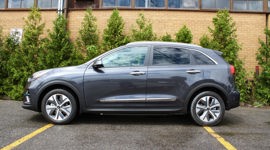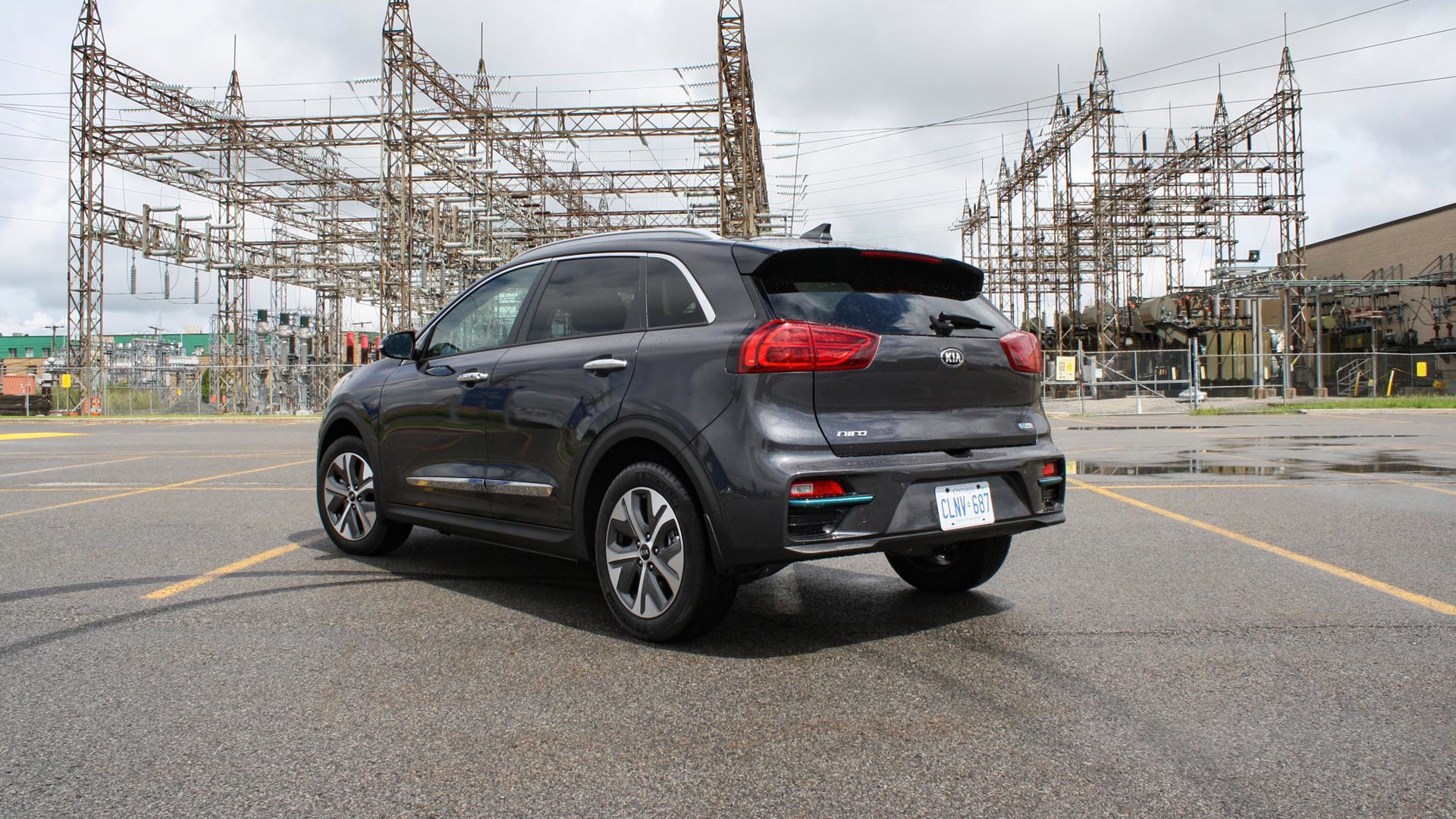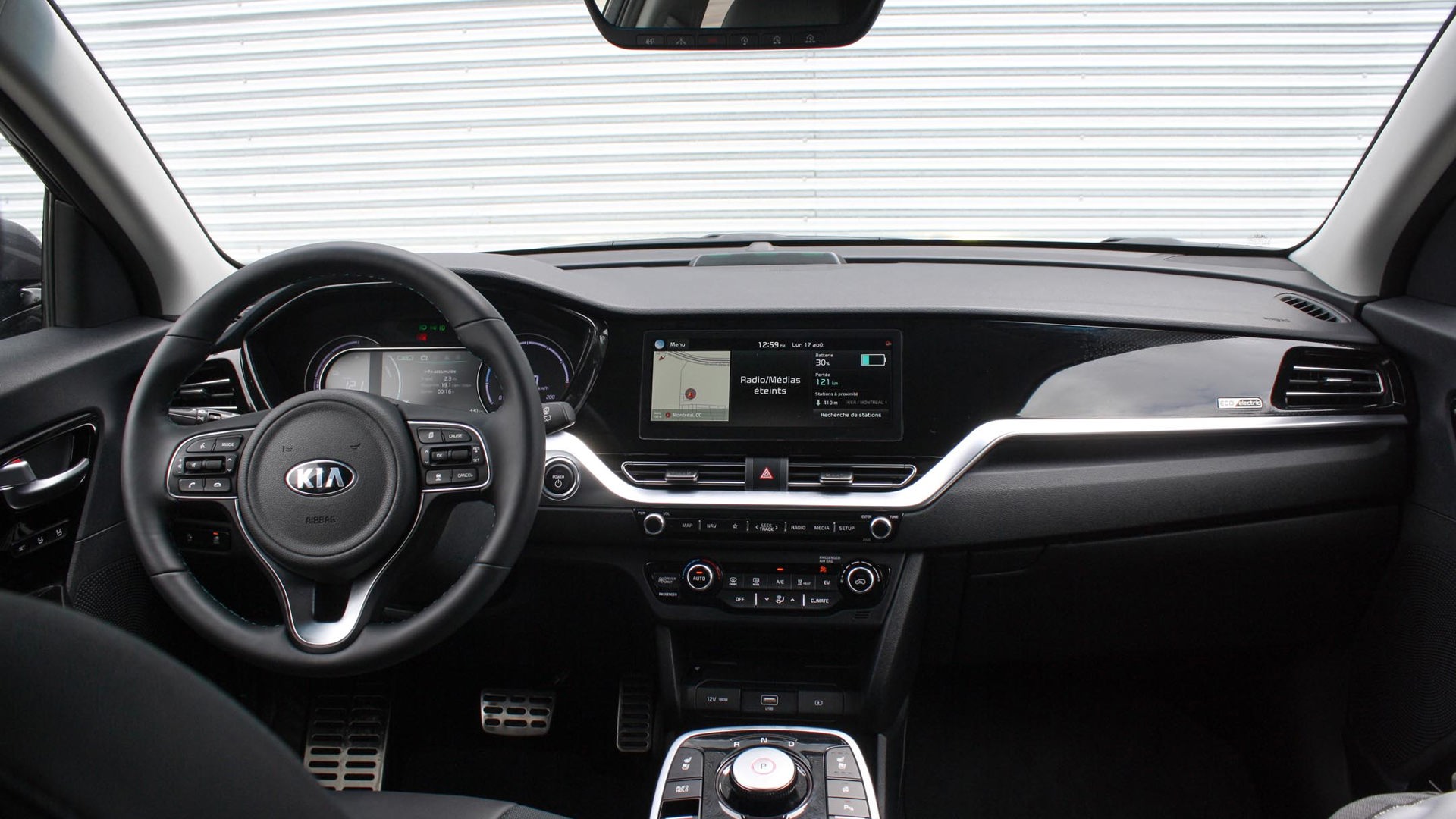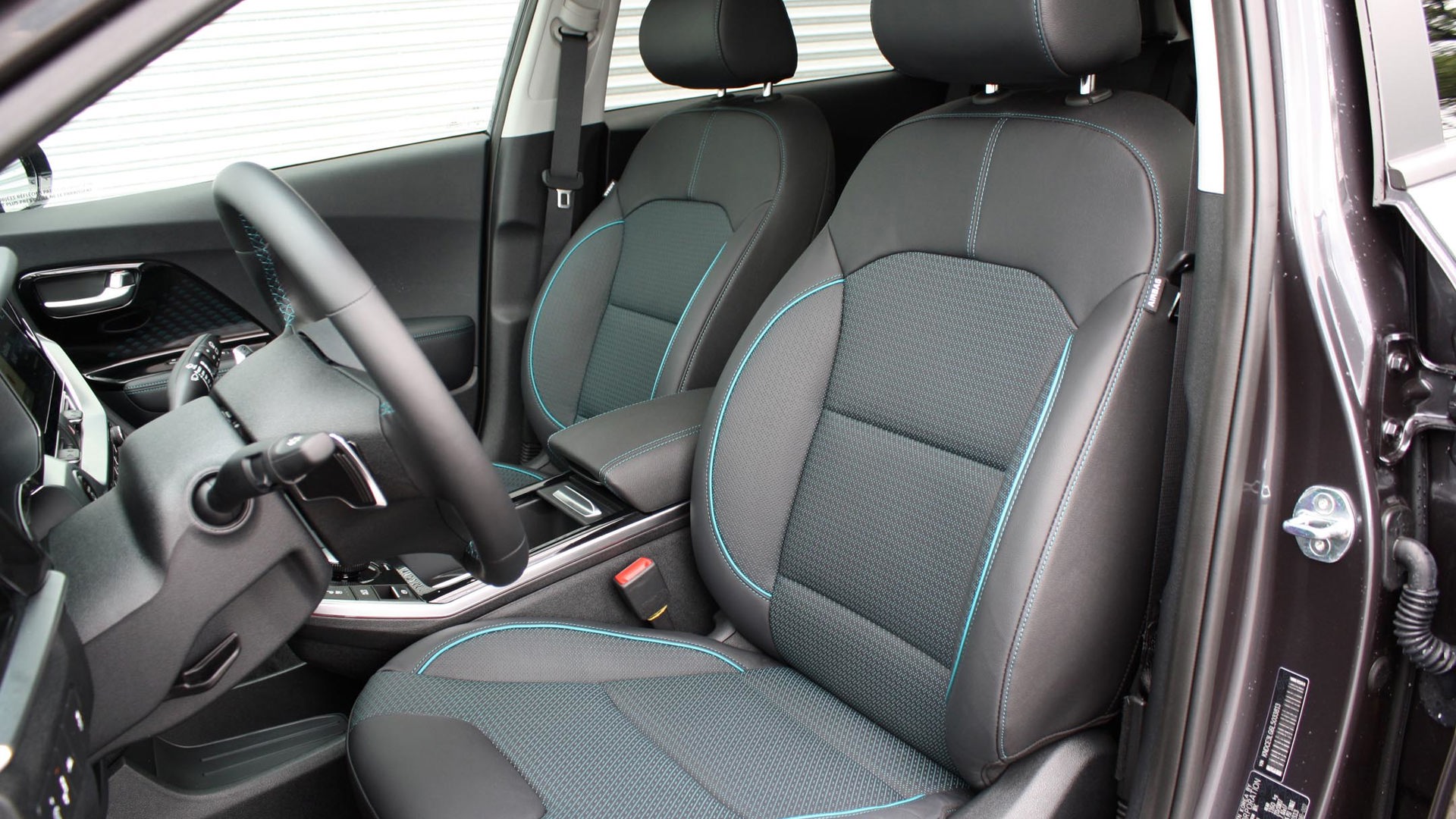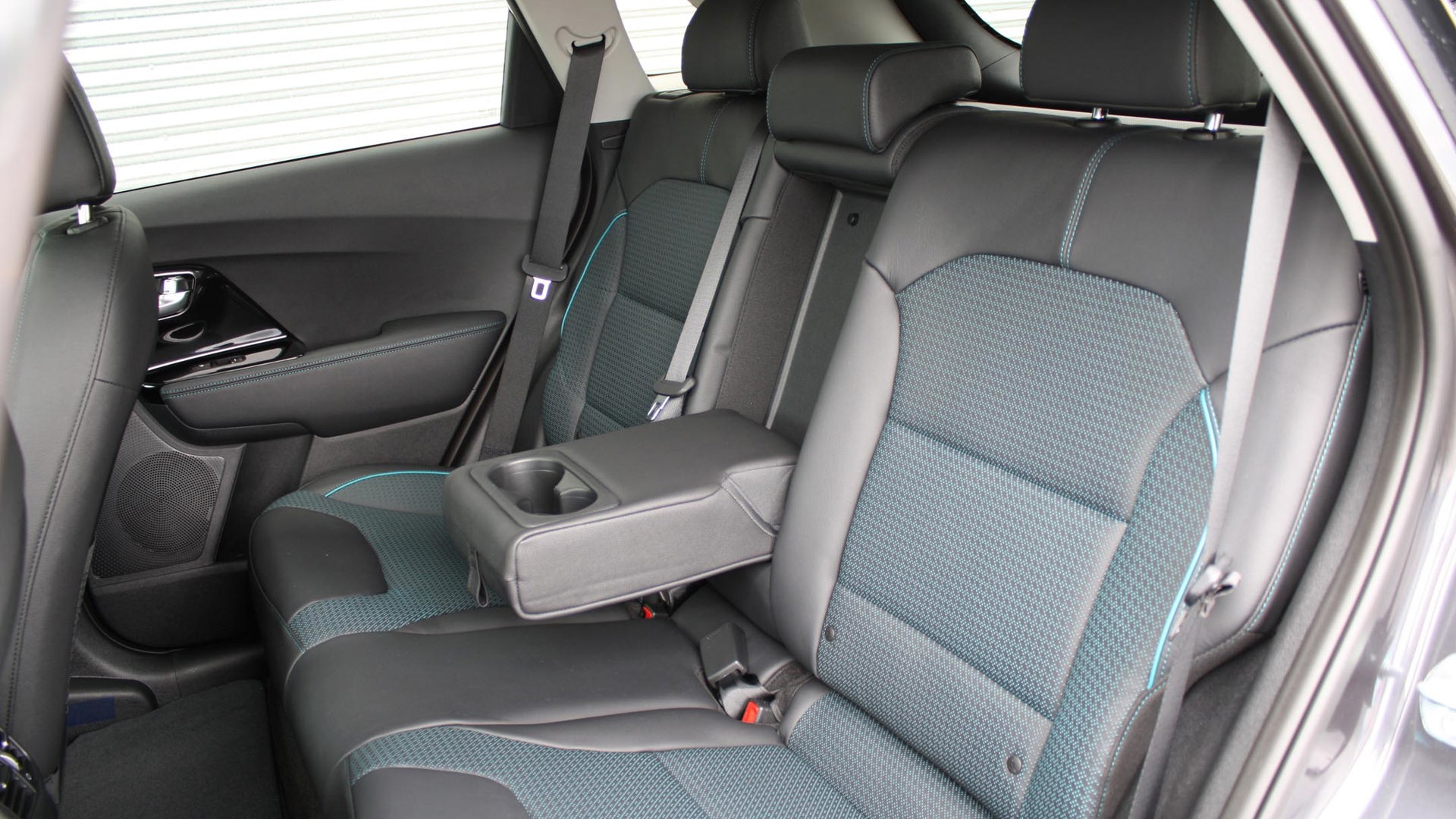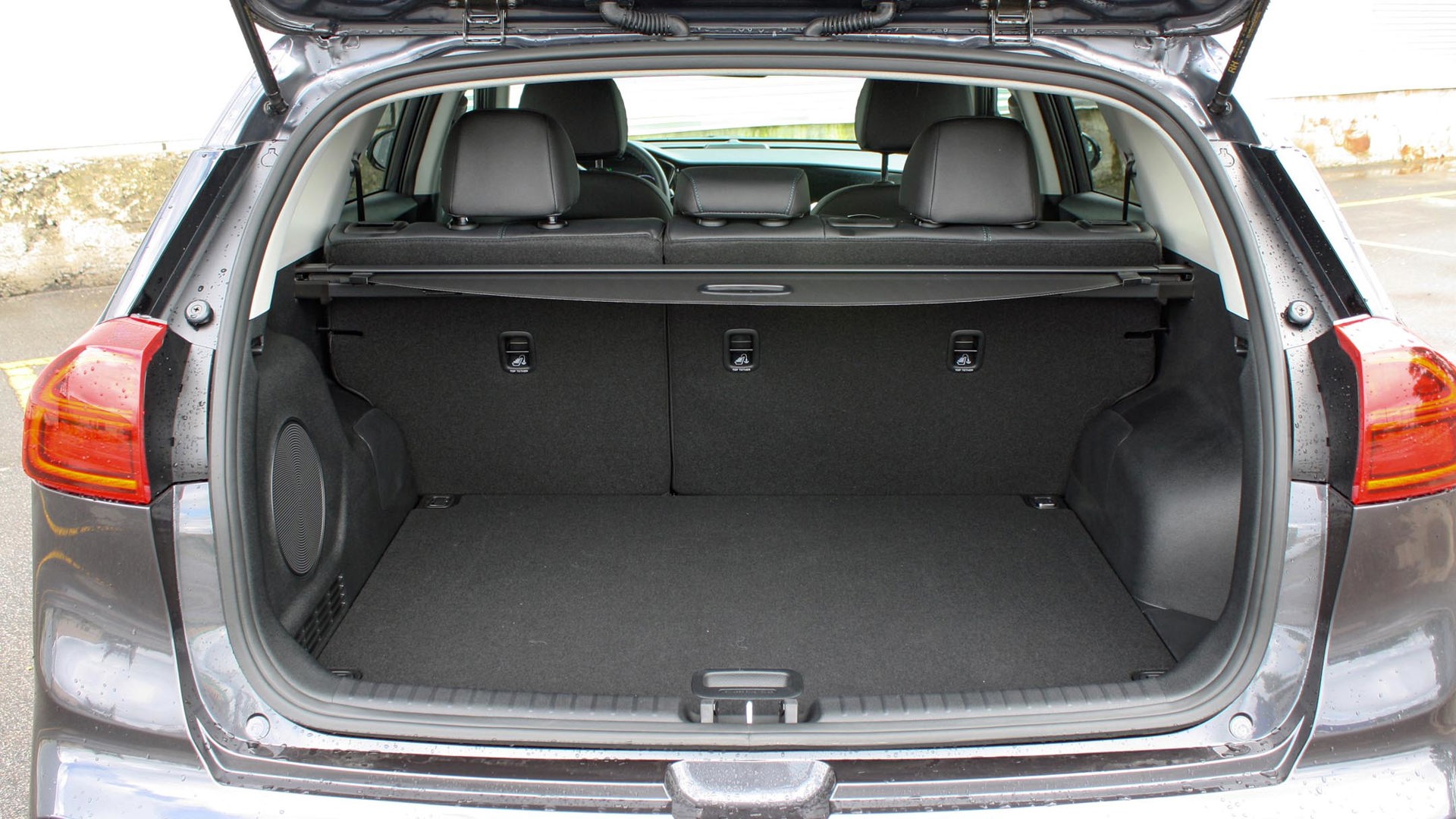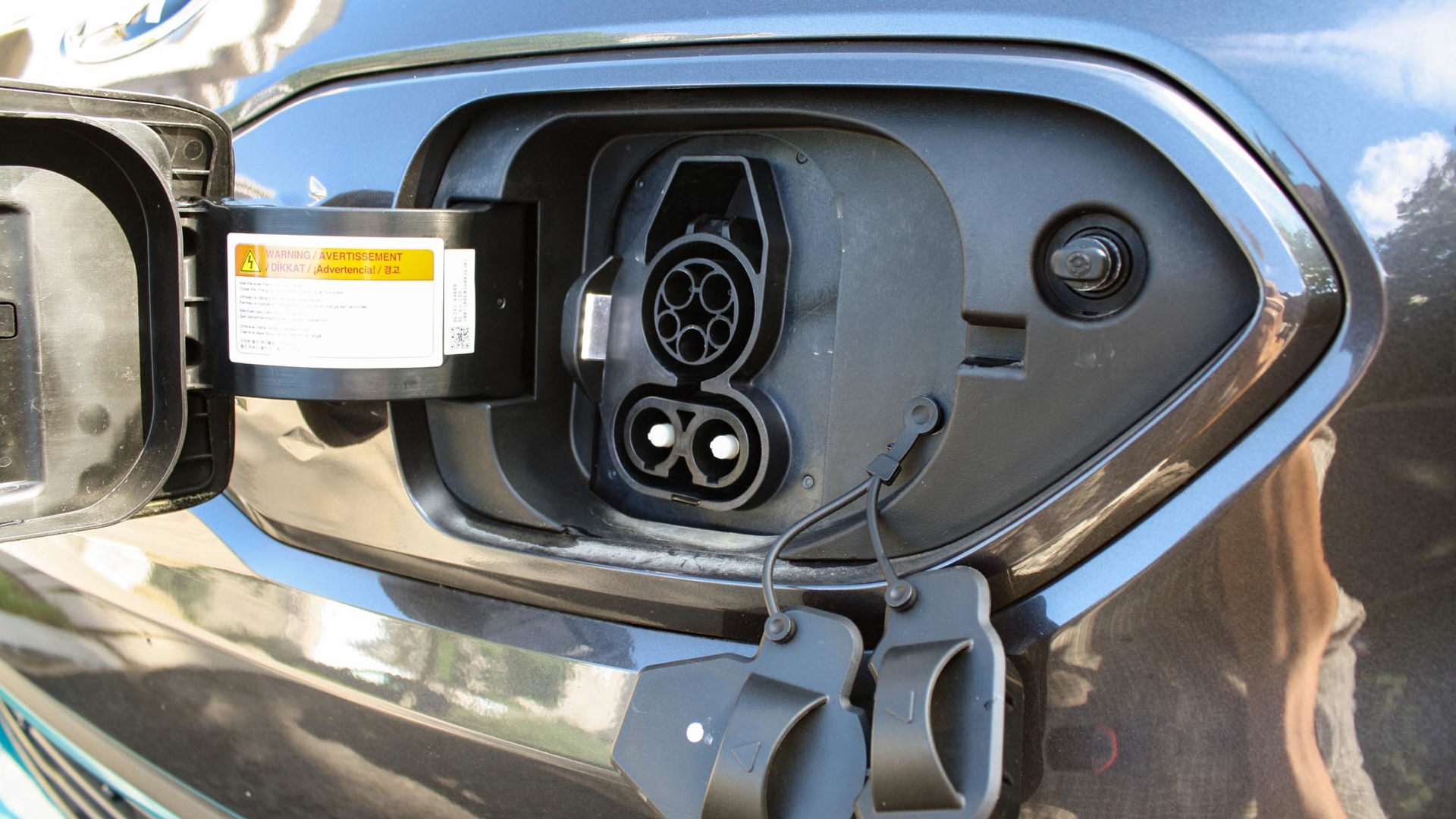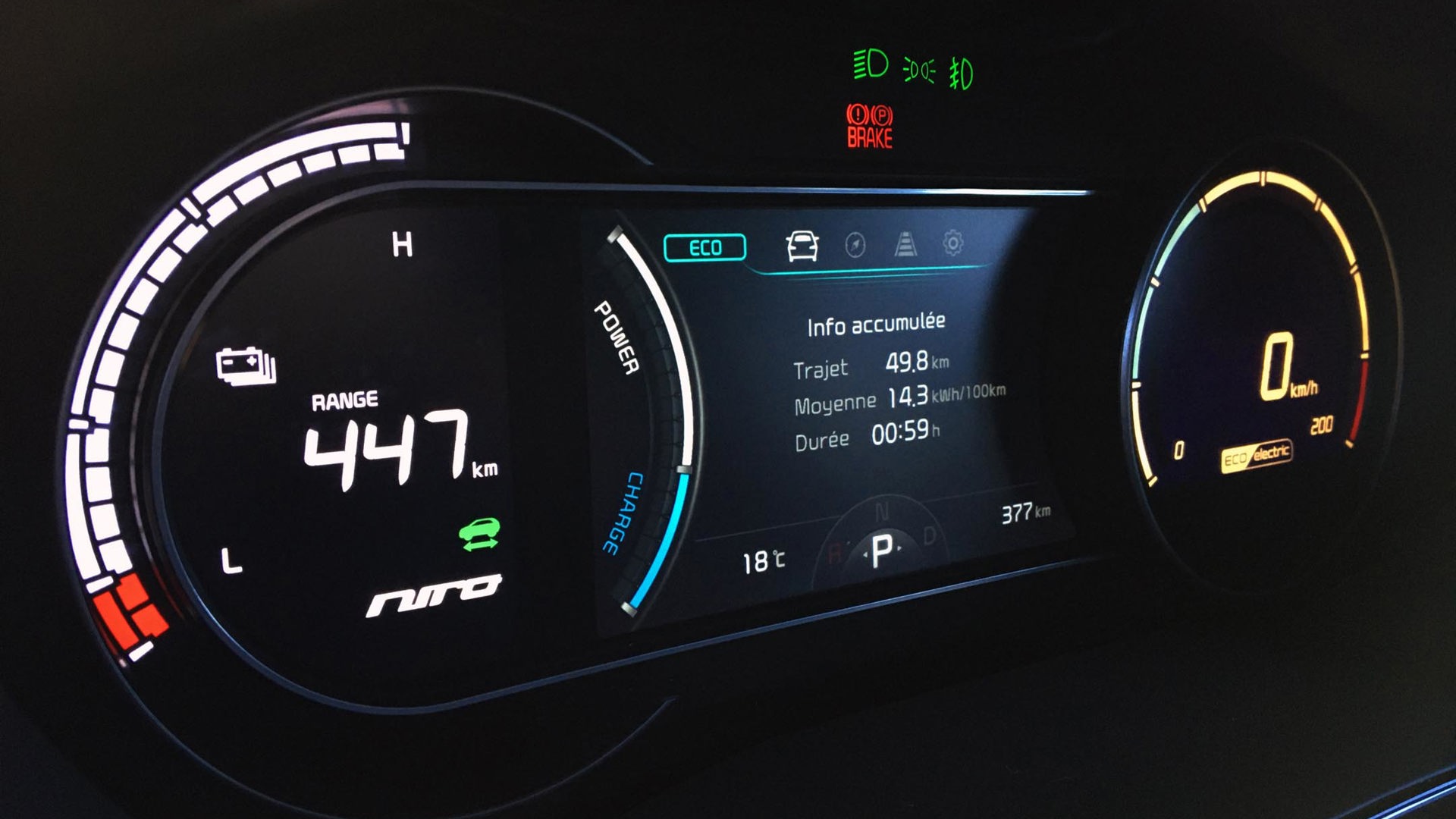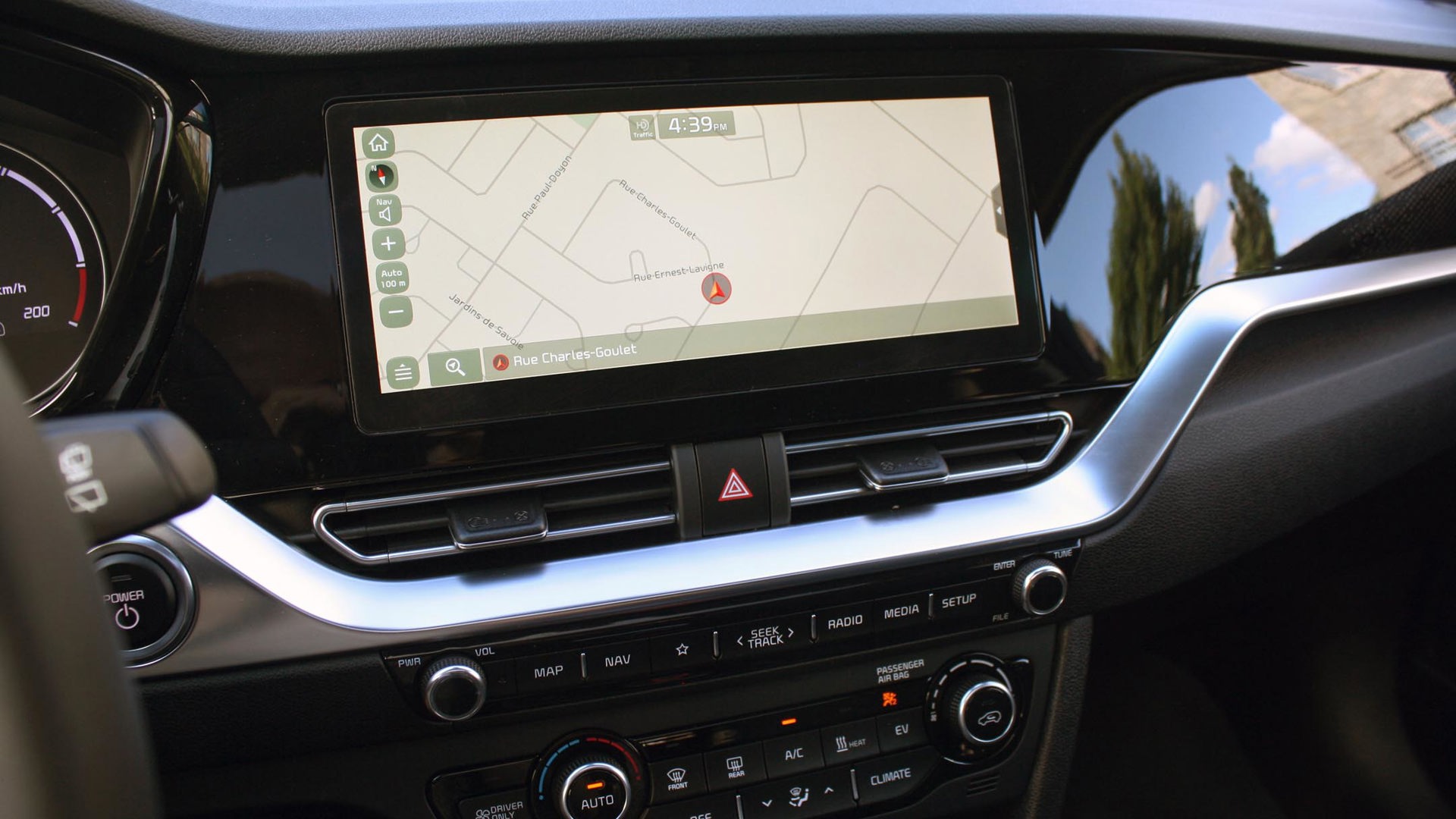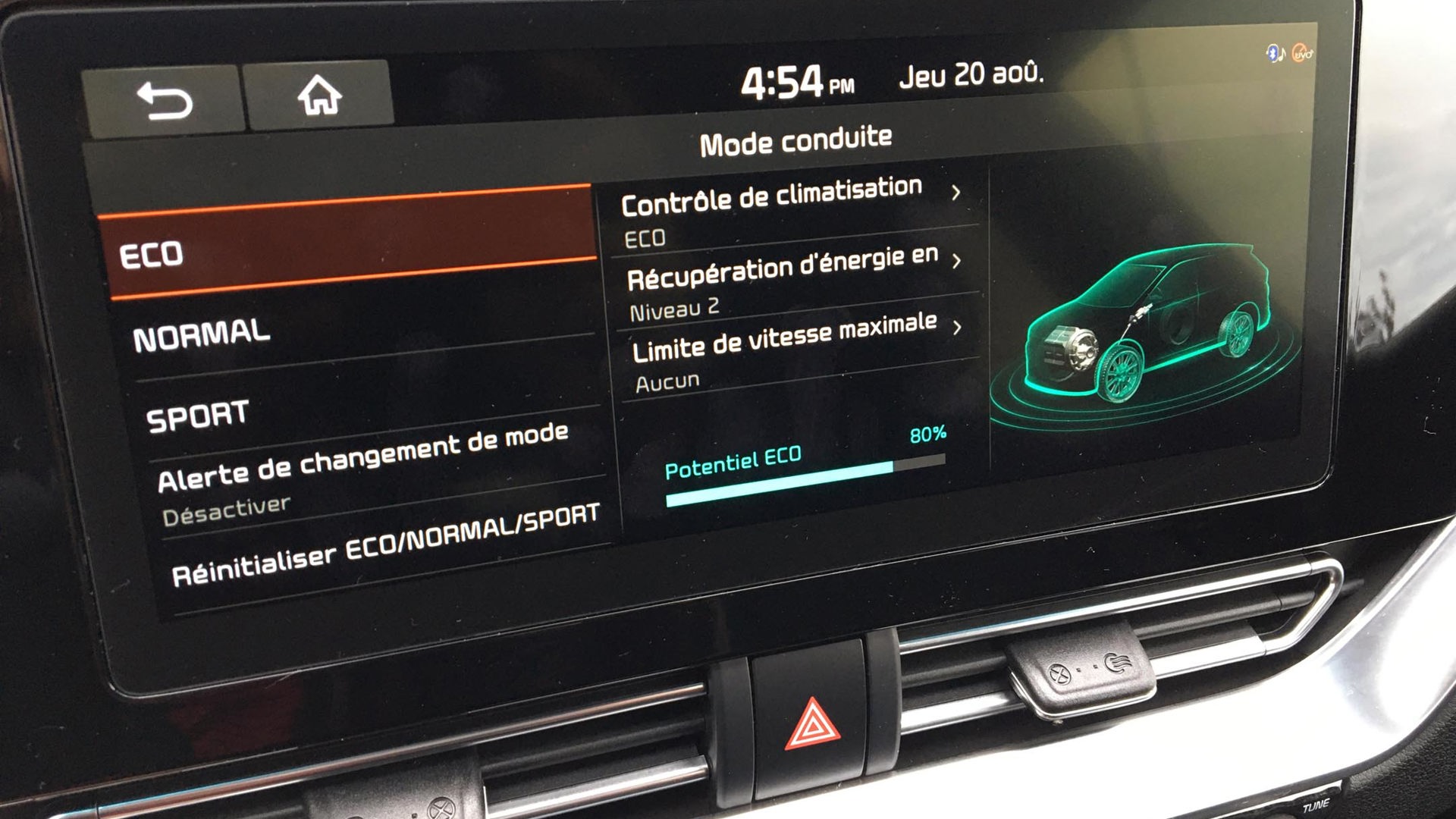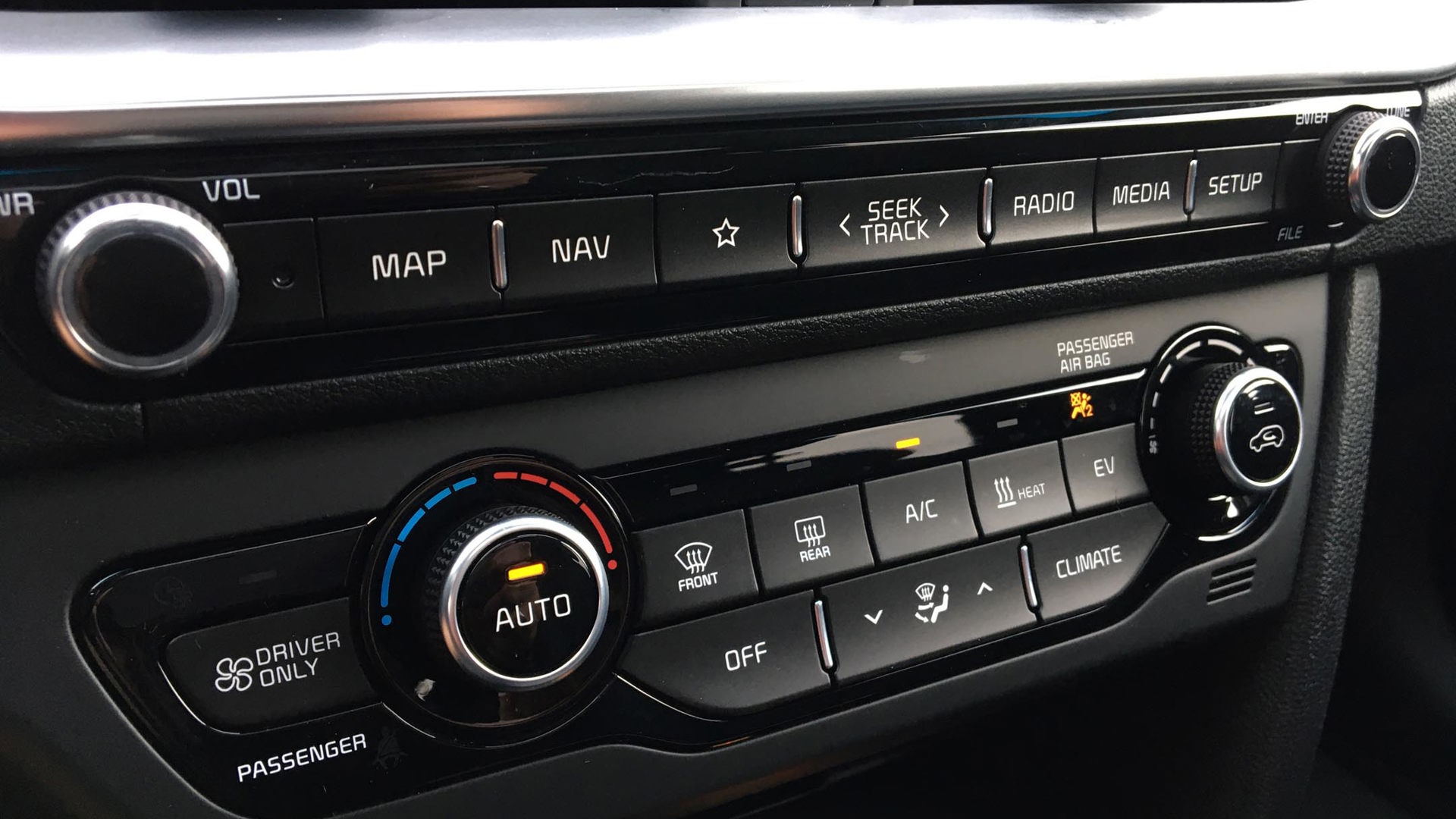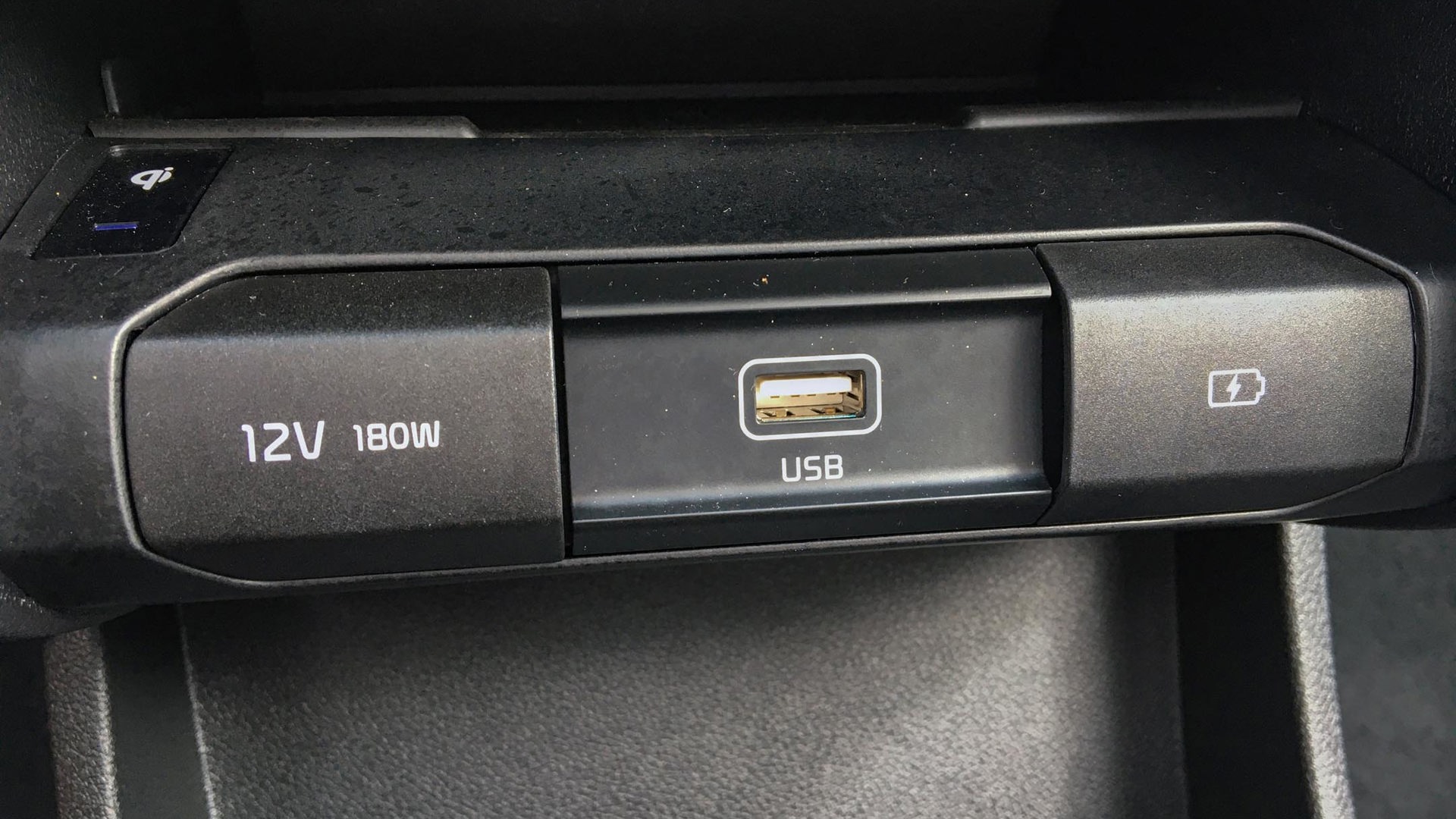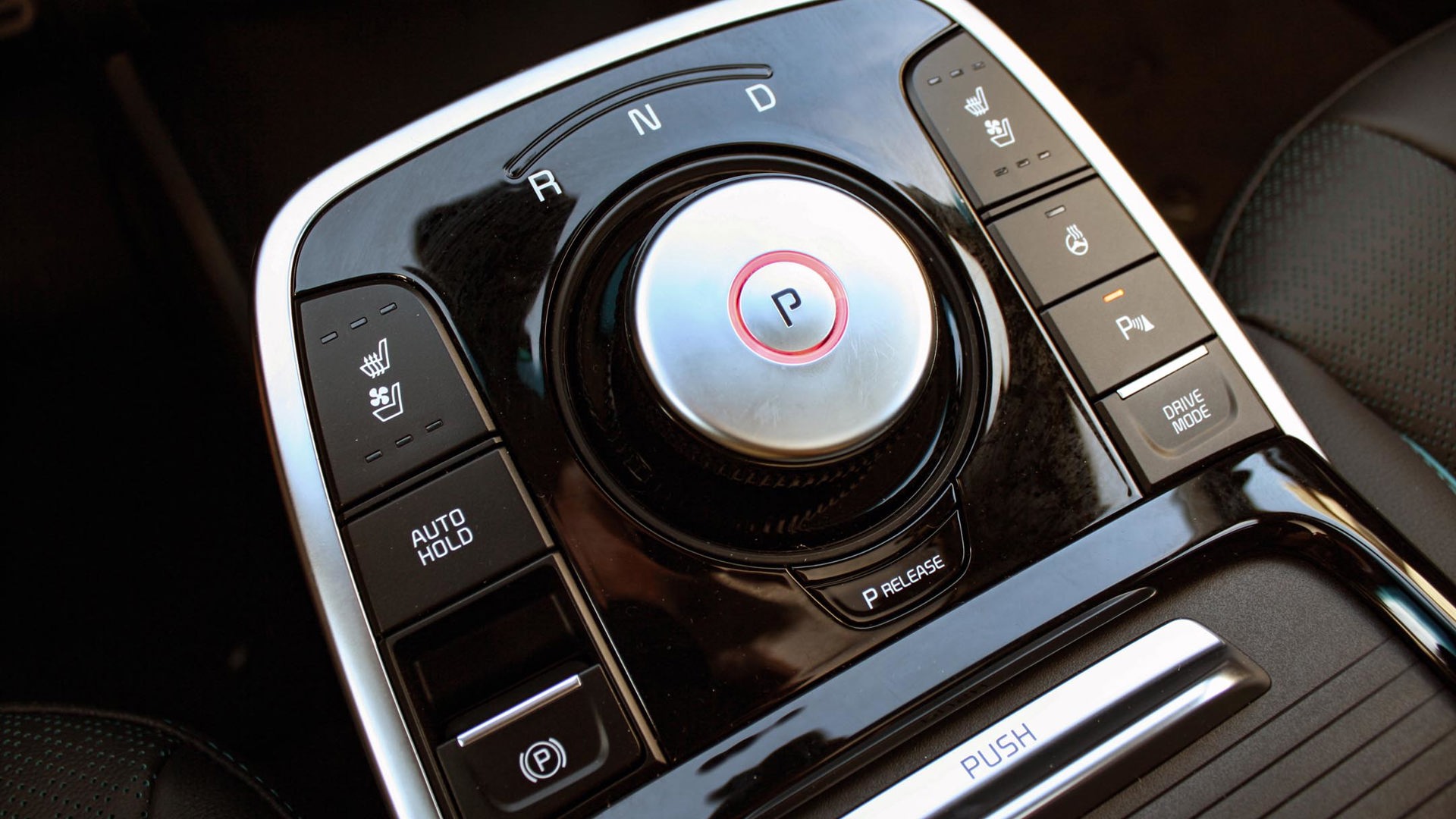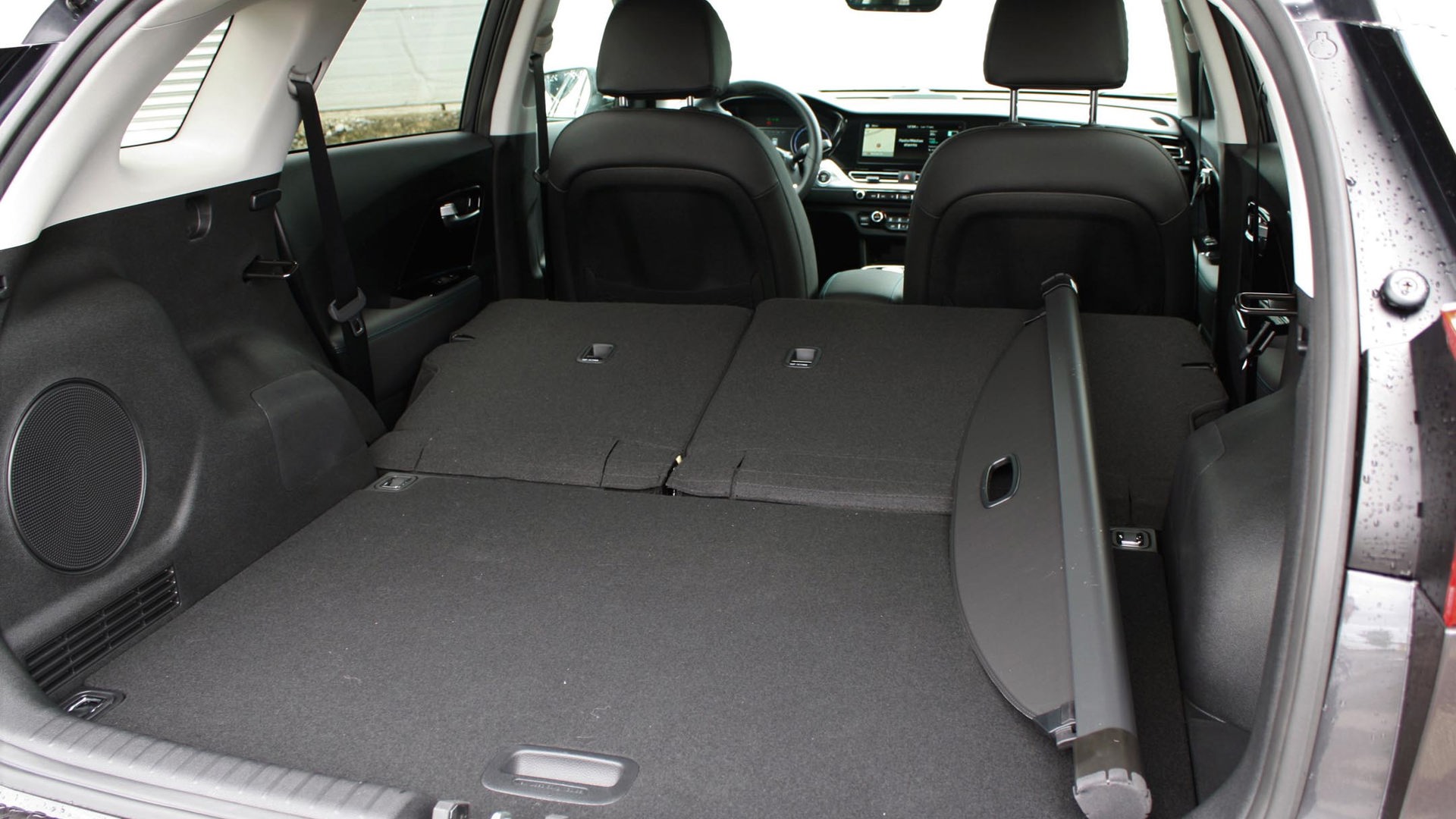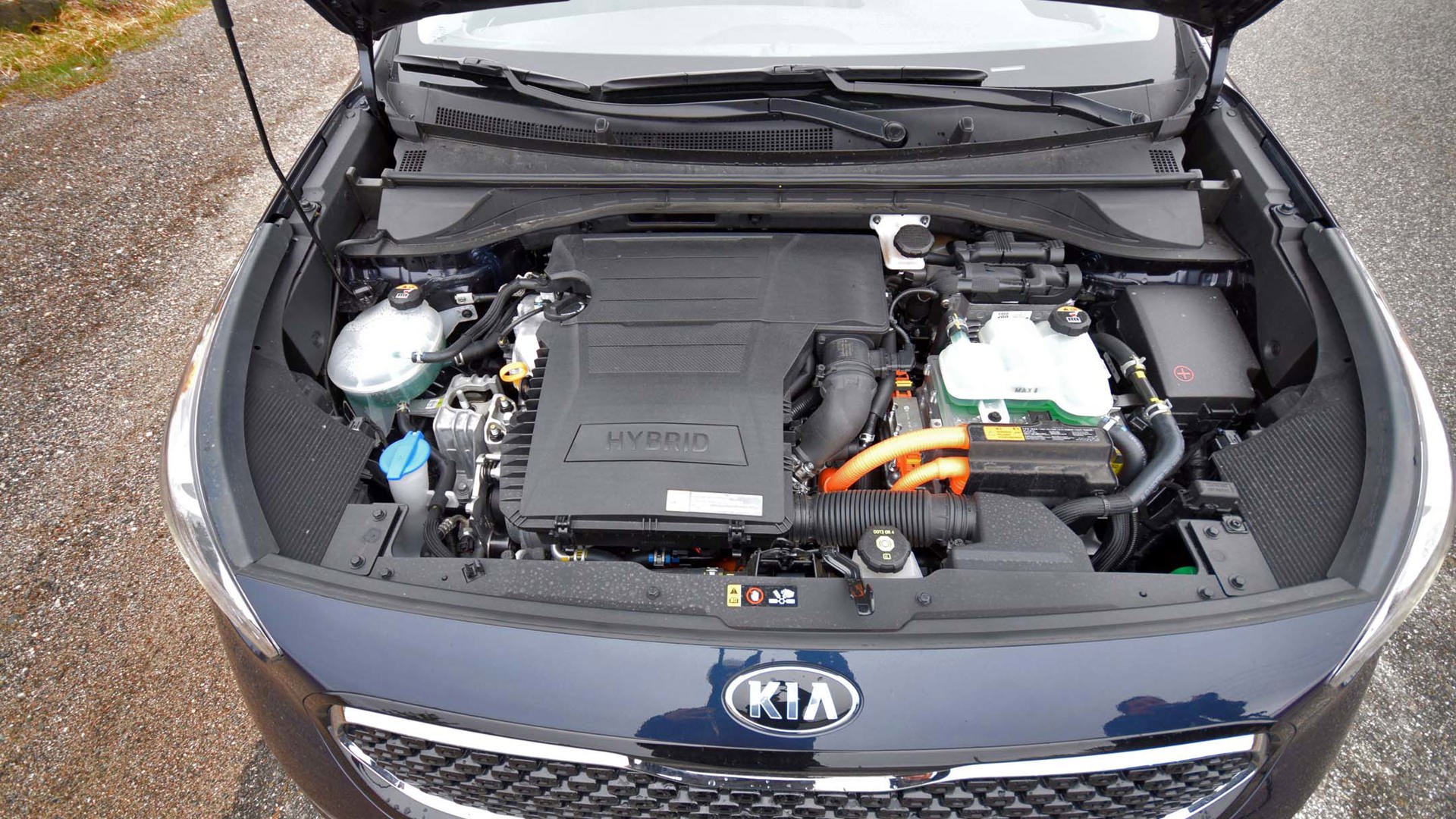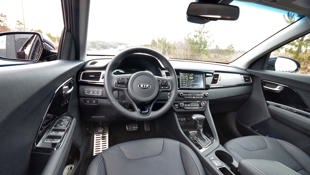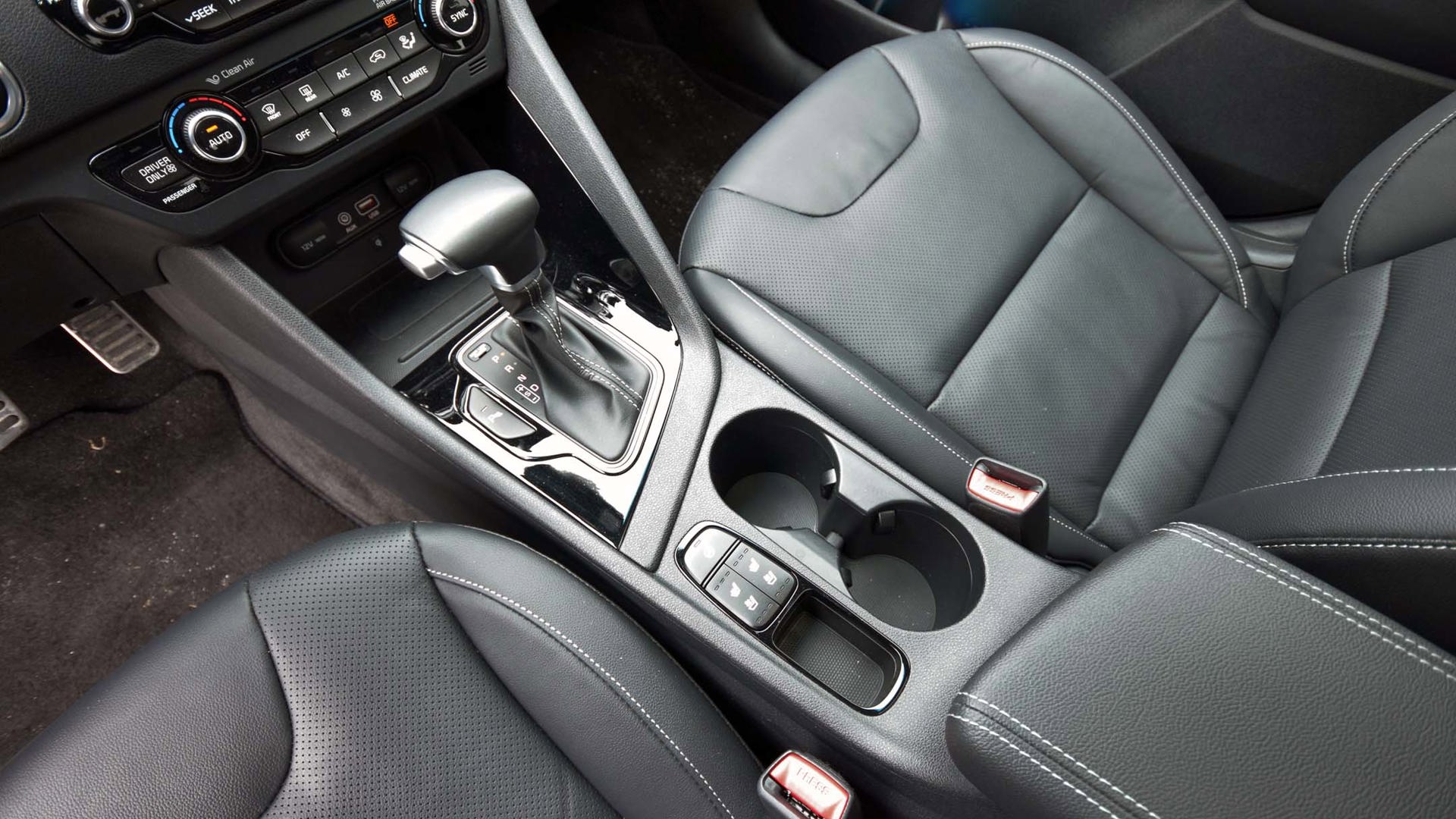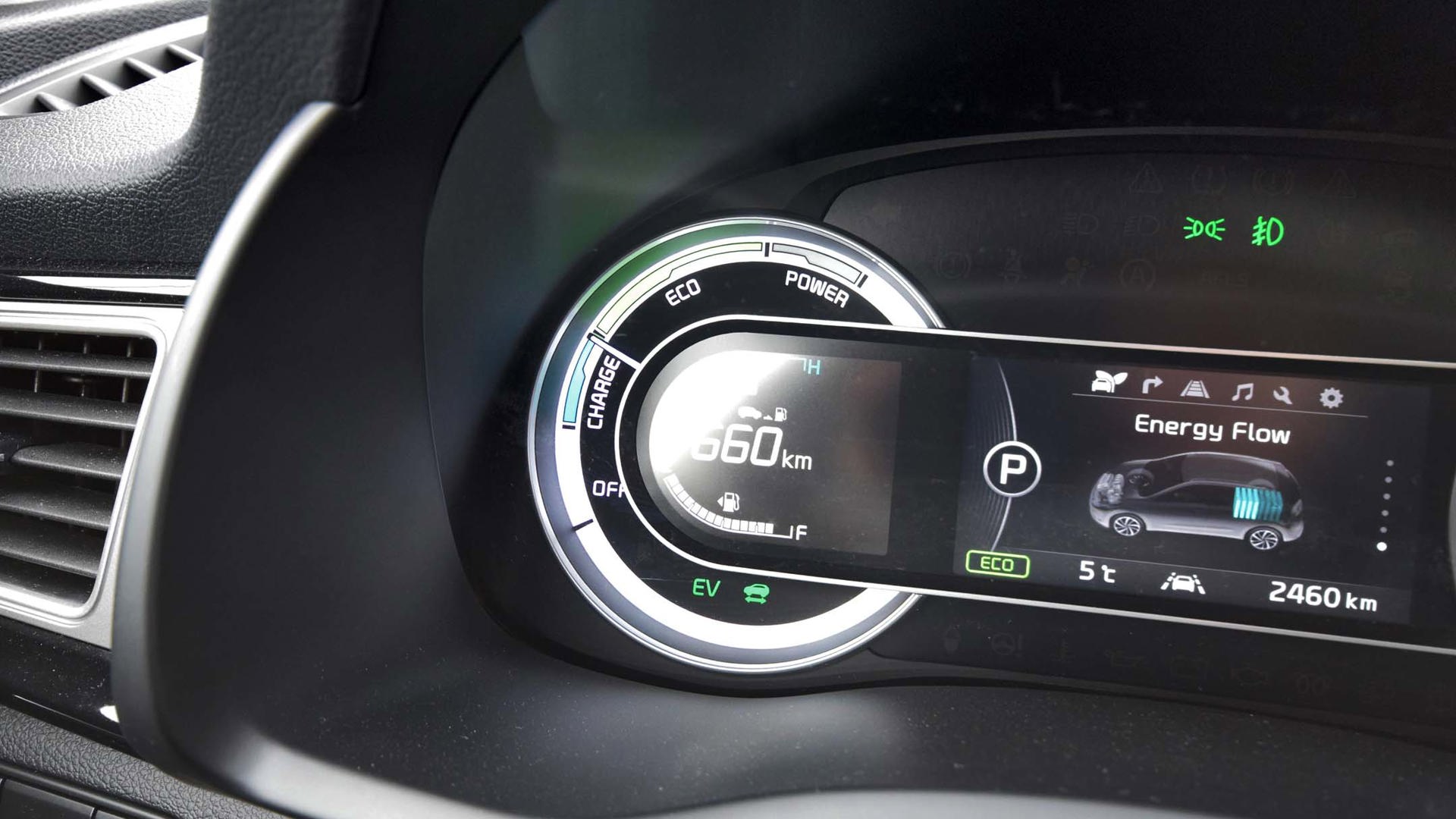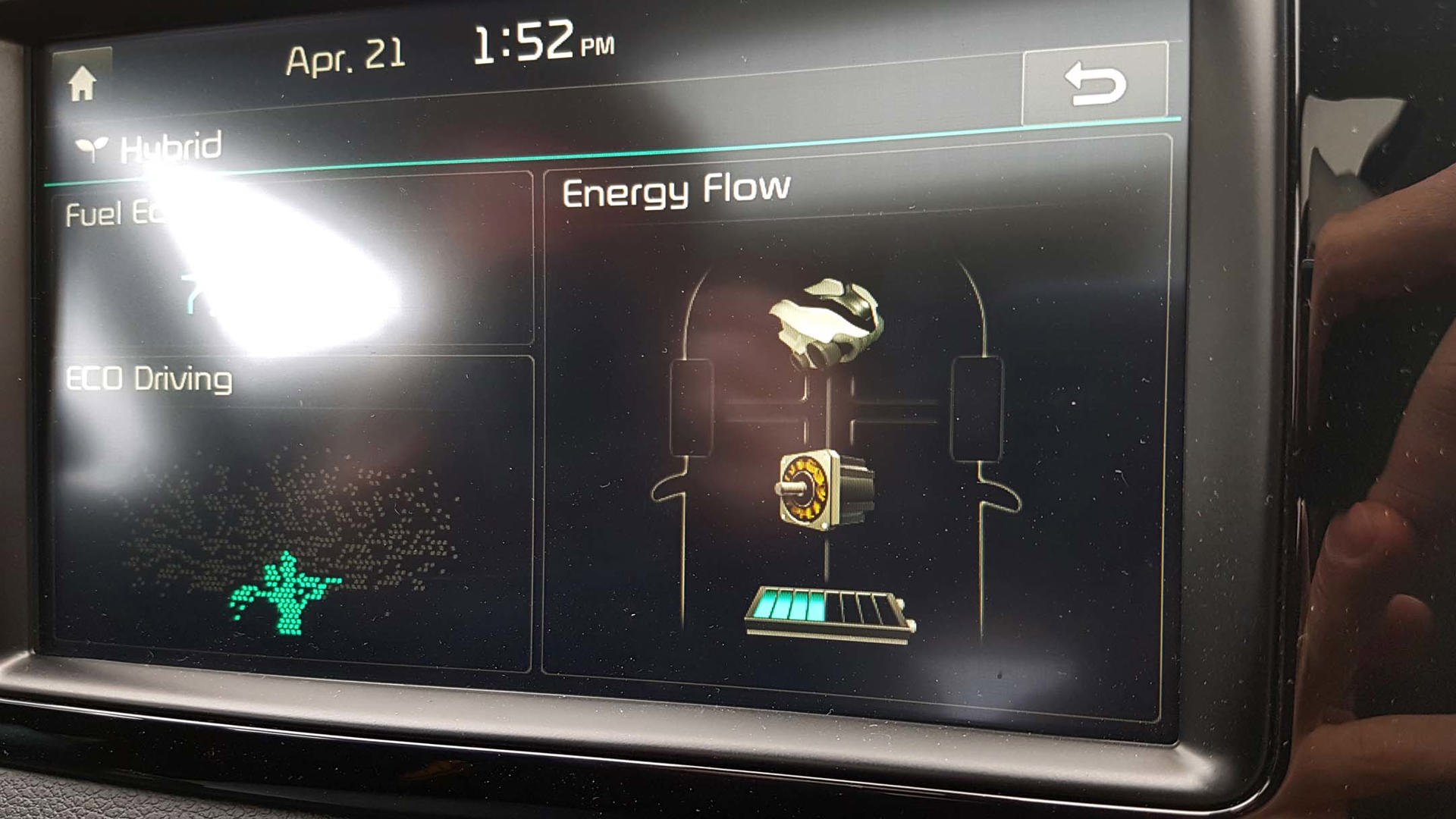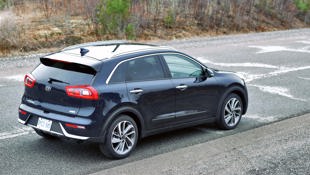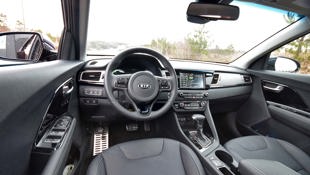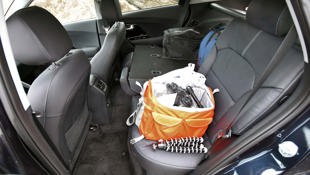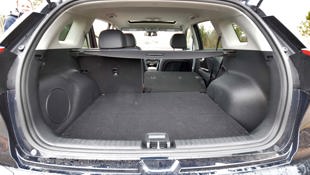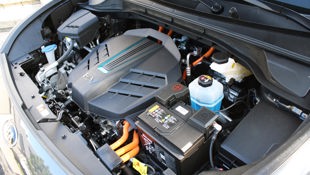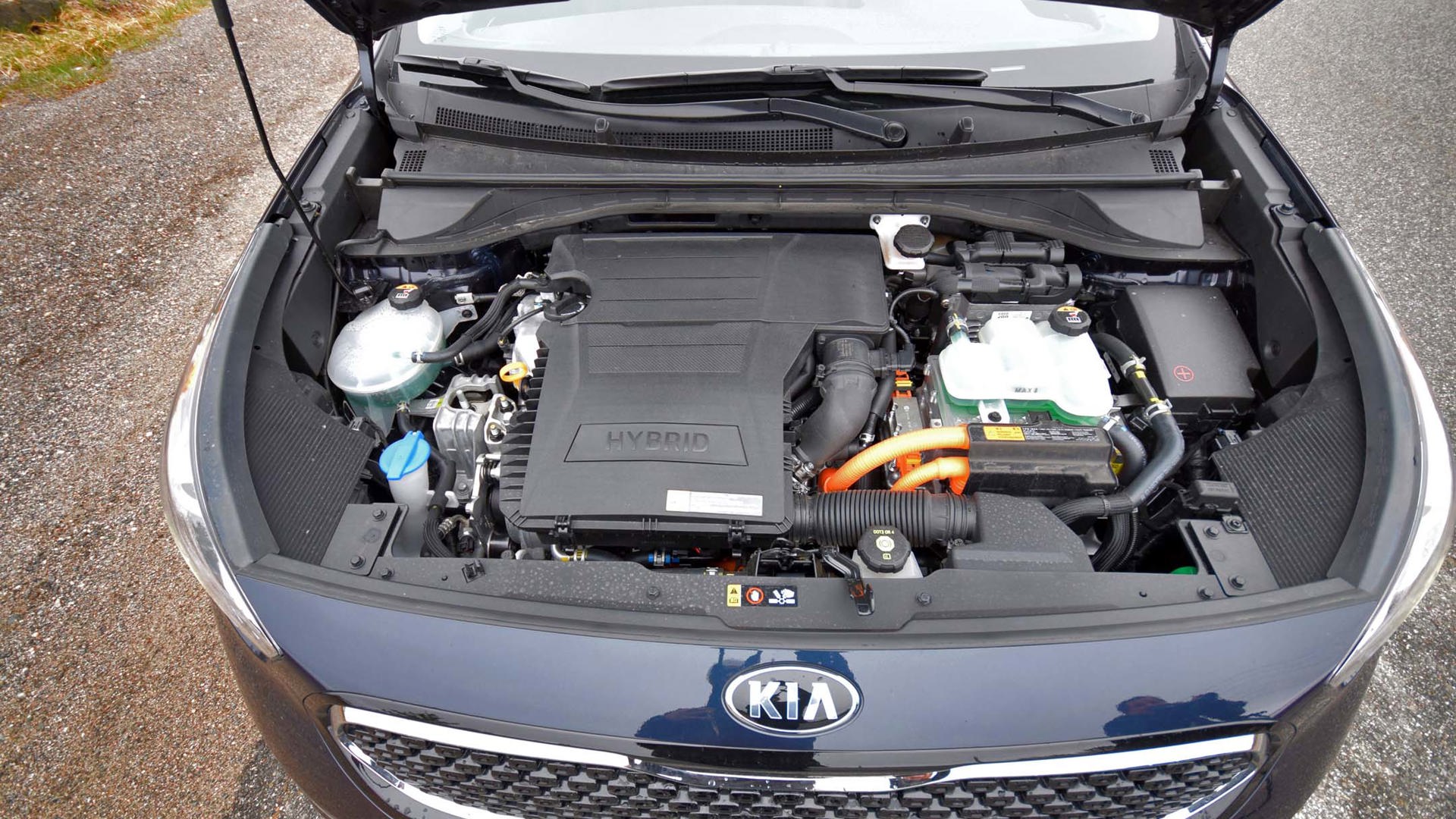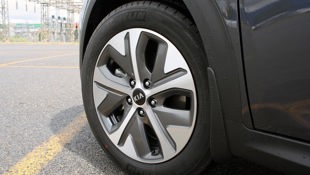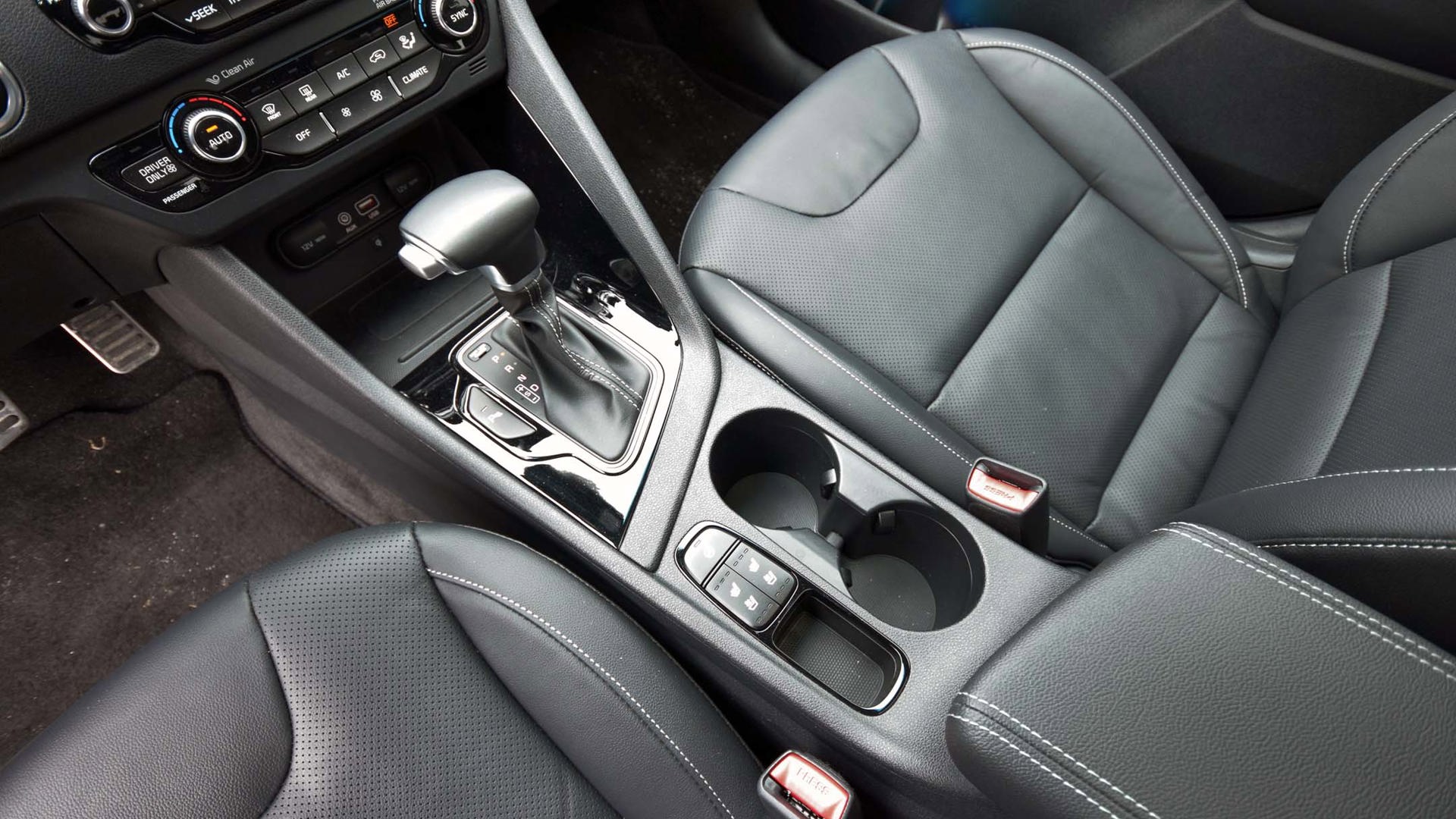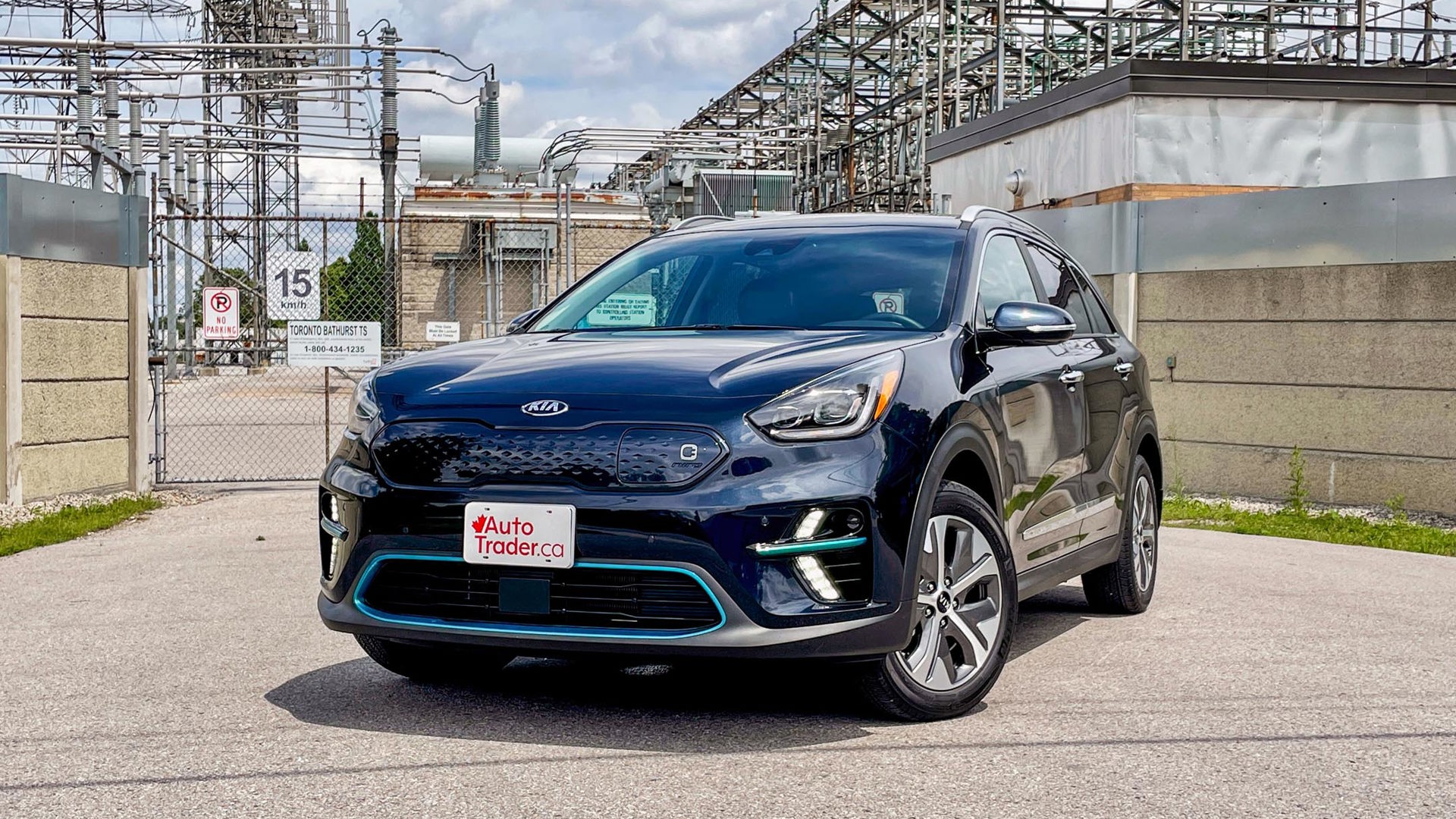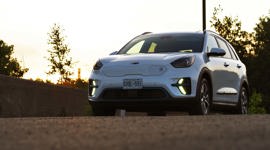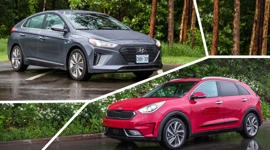Vehicle Type
Subcompact hybrid crossover
History/Description
When Kia launched the Niro in 2016, it created a new model range that became home to a lineup of electric and electrified sub-models.
There are hybrid, plug-in hybrid (PHEV), and all-electric models to choose from. The Kia Niro comes with standard hybrid power from a four-cylinder gas engine paired with an electric motor, and from the driver’s seat, the Niro operates like any other vehicle. As you drive around, the hybrid engine charges the battery, storing electricity that can be used to boost performance and reduce fuel consumption. There’s no plugging in to charge, and no additional work on the driver’s part – just gas up and drive.
The Niro Plug-In Hybrid (PHEV) works similarly to the standard model, though drivers can plug into an electrical outlet or charger to store surplus electricity within its higher-capacity battery. Fully charged, that battery stores enough energy to handle trips as long as 42 km before any gasoline is required. Once that all-electric range is depleted, the vehicle switches automatically to hybrid mode, where it can drive hundreds of kilometres more. Simply put, the Niro PHEV is like an all-electric crossover for shorter trips, and a conventional hybrid for longer ones.
Finally, the Niro was available as an all-electric model called the Niro EV, which offers about 385 km of driving range on a single charge. For 2019, energy consumption was rated at 16.8 kWh/100 km in the city, 20.5 on the highway, and 18.6 combined.
Look for adult-friendly rear seats, a flexible cargo hold, modern styling, an upscale cabin, and a powerful LED lighting system. Safety gear includes adaptive cruise control and rear cross-path detection, and drivers can expect a full suite of approachable, easy-to-use technology. Specifically, an array of handy on-screen infographics and displays make it easy to monitor the current state and operation of the Niro’s various drive and safety systems, which is handy for first-time users.
Look for a heated steering wheel, automatic lights, wipers, and climate control, leather seating, a sunroof, and more.
The Niro’s gasoline engine (if equipped) is a 1.6L four-cylinder, and the Niro EV’s power comes from a 356-volt motor with 201 hp, fed by a 64-kWh battery. All units are front-wheel drive.
What Owners Like
In measures like value, styling, equipment, and an easy-to-drive character, the Niro lineup seems to have impressed its owner’s community. The lighting and stereo systems are highly rated, as is the performance and throttle response from the all-electric Niro EV.
First time users of advanced connectivity and safety tech can expect a minimal learning curve, and straightforward setup and operation.
What Owners Dislike
Some Niro owners wish for a smoother and more relaxing ride on certain rough surfaces, as well as a more precise and natural feel to the brake pedal action. Others will wish for a higher-resolution video feed from the back-up camera system.
What Owners Say
In multiple online polls of the Kia Niro owner’s community, the majority of owners report minor (if any) notable issues as their vehicles age. Still, some reports of rare but serious problems mean that test-driving shoppers can take a few steps during their test driving and shopping process to help protect themselves.
Unwanted Lurching
Some owners of Niro PHEV models have reported a dramatic lurching sensation, possibly accompanied by a loud slamming sound, from the driveline of the vehicle. Most have not. If present, this sensation may be the most obvious when accelerating at moderate to heavy throttle from a dead stop.
On your test drive of a Niro or Niro PHEV, be sure to apply light, moderate, and heavy throttle when taking off from a stop sign or traffic light. Also, stop the vehicle quickly, and then immediately apply throttle to set off once again, as soon as the vehicle comes to rest. This exercise is another means test-driving shoppers can use to coax the problem sound from the Niro’s driveline.
If you detect any lurching or slamming, have the unit you’re considering seen by a Kia technician before you buy, or move to another unit. Though relatively rare against total sales volume, this lurch could be a sign of serious trouble you’ll want to know about before you buy. In some cases, owners report that a transmission fluid flush and switch to a revised transmission gasket fixes the problem. In other cases, transmissions have been replaced. The majority of complaints relating to this issue appear to occur at low mileage, and are dealt with under warranty. Here’s some more reading.
High-Voltage Fuse
Some Niro and Niro PHEV owners have reported trouble caused by a failed high-voltage fuse. Most have not. That’s good news, as this one’s a doozy: apparently, without warning the Niro’s high-voltage fuse may blow, resulting in numerous warning lights and error messages in the instrument cluster. The vehicle may become inoperable, and unable to start. In some reported cases, owners have had affected vehicles towed to dealerships, sometimes for an extended stay for diagnosis and repair.
Replacing the blown fuse with an updated fuse seems to solve the problem – though in a handful of cases, further diagnostics and parts are required. Using diagnostic equipment and expertise in a dealer setting, technicians can quickly identify and rectify this problem, usually under warranty.
Though the overwhelming majority of Niro owners do not report this problem, it’s a good example of how the failure of a simple and inexpensive electronic component can have cascading effects on multiple vehicle systems. Here’s some more reading.
Oil Monitoring
Some owners of Niro and Niro PHEV models have reported a potential issue with engine oil levels increasing over time, possibly alongside a strong fuel odour that’s apparent when the engine’s dipstick is removed for an oil level check. On your test drive, check the Niro’s engine oil according to the instructions in the owner’s manual. If the oil level reading is high (for instance, above the full mark), and/or if a strong smell of gasoline is detected when the dipstick is removed, proceed with caution or move to another unit.
Certain driving styles and locales can contribute to moisture buildup within the engine’s oil supply, which raises the dipstick level. In other cases, a leaky mechanical fuel pump may allow gasoline to enter the engine’s oil supply, which is bad news. This issue can cost you money and headaches, while reducing the resale value of your used Niro. During ownership, plan to check engine oil levels regularly, and report any problems you detect to your dealership as soon as possible for inspection. Keep a copy of all documentation relating to oil level problems, which can help speed warranty claims, if required. Here’s some more information.
Unwanted Clicking
Some owners of Kia Niro EV models have reported an unwanted ticking or clicking sound that could be evidence of potential electric motor trouble. On your test drive of a Kia Niro EV, quiet the vehicle’s cabin and spend some time coasting, as well as lightly and moderately braking, down from speed. Do this multiple times, with varying levels of deceleration. You’re trying to engage the vehicle’s regenerative braking system in as wide a range of operating situations as possible.
As you brake, coast and regenerate, listening closely to the front of the Niro near your feet. You’re on the lookout for a rhythmic ticking sound, which some owners describe as a “fast clock” noise, or something similar to the spinning “Wheel of Fortune” from the TV game show.
Though rare, this sound could be evidence of a problem with the Niro EV’s electric motor, bearings within, control unit, or some other hardware elsewhere within the electric driveline. Here’s some more reading, and some more accounts from a small number of owners affected by this issue, which relates to the so-called “710” electric motor found in the Niro EV. This problem seems most prevalent in 2019 model-year units, and seems to happen almost exclusively at low miles. Affected owners have had electric motors replaced with updated units under warranty.
Charging Equipment
If the Kia Niro you’re considering is a PHEV or EV model, be sure to check the charging provisions included. Look closely for indications of scorching, bent plug prongs, damaged plug ends, and rips or tears in the insulation on the charge cable cord. If the charging cable included with your Niro EV or PHEV is in poor shape, call it into your pricing negotiations and budget for a replacement. Using a badly worn or damaged charge cord is a potential safety hazard.
Apparently, so is using certain non-factory-approved charging cables or at-home chargers. Though rare, some owners have reported dangerous melting of the Niro’s charge port, caused by the use of certain aftermarket chargers.
If shopping for a home charger or portable charging cable, be sure to seek out a unit from a reputable brand, or one approved by Kia for use in the Niro. Though rare, charge port or electronic system damage caused by the use of non-approved charging provisions isn’t covered by warranty, and may be costly to repair.
Recall Work
Recalls can be found here. Dealers perform recall work free of charge to correct safety defects with vehicles. Some Niro models are affected by certain recalls, and others are not. To see which recalls (if any) affect the model you’re considering, click here.
Safety Ratings
IIHS: Top Safety Pick + (2019)
NHTSA: 4/5 Stars (2021)
